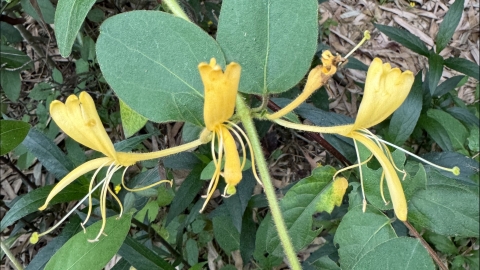What is the difference between Forsythia and Honeysuckle?
Generally speaking, the differences between Forsythia and Honeysuckle mainly manifest in their taxonomic classification, physical characteristics, properties and meridian tropism, therapeutic effects, and applicable conditions. A detailed analysis is as follows:
1. Taxonomic Classification
Forsythia comes from the dried fruit of Forsythia suspensa, a plant belonging to the Oleaceae family and the Forsythia genus. Honeysuckle comes from the dried flower buds or early-opening flowers of Lonicera japonica, a plant belonging to the Caprifoliaceae family and the Lonicera genus. They differ in family and genus, representing fundamental differences in plant origins, which serves as the basic distinguishing characteristic.
2. Physical Characteristics
Forsythia is usually ovate to ovoid in shape, with irregular longitudinal wrinkles and numerous raised small spots on the surface. Each side has a distinct longitudinal groove, with a pointed apex and a small fruit stalk at the base that may be absent. Honeysuckle is club-shaped, thicker at the top and narrower at the bottom, slightly curved. Its surface is yellow-white or green-white, densely covered with short, soft hairs, occasionally with leaf-like bracts. The calyx is green, with five apical lobes, each covered with hairs. The two differ significantly in shape, color, and surface texture.

3. Properties and Meridian Tropism
Forsythia has a bitter taste and is slightly cold in nature, entering the Lung, Heart, and Small Intestine meridians. Honeysuckle has a sweet taste and is cold in nature, entering the Lung, Heart, and Stomach meridians. Although both are cold in nature, Forsythia is bitter while Honeysuckle is sweet, and they differ in meridian tropism—Forsythia enters the Small Intestine meridian, while Honeysuckle enters the Stomach meridian. These differences in properties and meridian tropism determine their distinct therapeutic focuses.
4. Therapeutic Effects
Forsythia primarily functions to clear heat and detoxify, reduce swelling and dissipate nodules, and disperse wind-heat. It is particularly effective in reducing swelling and dispersing nodules, especially for treating abscesses, carbuncles, scrofula, and phlegm nodules. Honeysuckle primarily functions to clear heat and detoxify and disperse wind-heat. Its heat-clearing and detoxifying effects are more extensive, particularly effective for treating exogenous wind-heat, initial stages of warm diseases, and heat-toxin-related conditions such as abscesses, carbuncles, and sore throat.
5. Applicable Conditions
Forsythia is suitable for treating abscesses, carbuncles, scrofula, phlegm nodules, wind-heat感冒, initial stages of warm diseases, and painful, difficult urination due to heat-dampness, showing particularly effective results for localized swelling and pain caused by heat-toxin accumulation. Honeysuckle is suitable for treating exogenous wind-heat, initial stages of warm diseases, boils, furuncles, throat obstruction, erysipelas, heat-toxin-related bloody diarrhea, and other conditions. It is more commonly used in treating various heat-toxin-related illnesses and exogenous surface syndromes.
In addition, when using these herbs, selection should be based on specific conditions and individual constitution through pattern differentiation to avoid blind medication. Furthermore, individuals with deficiency-cold in the spleen and stomach should use them cautiously to prevent gastrointestinal discomfort and interference with recovery.








